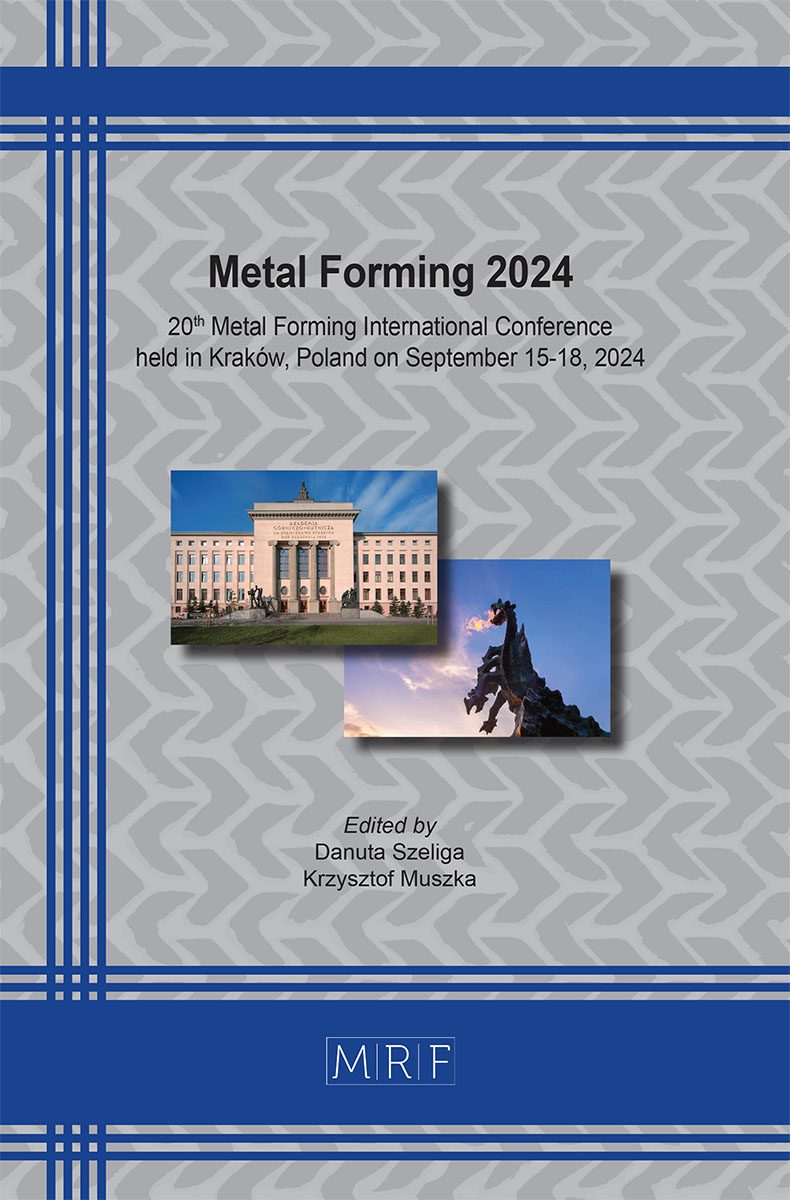–
Advanced elastic-plastic constitutive models for medium-thickness high-strength steel plates: Microstructure-based parameter identification and verification
HU Xiao, ZHOU Yu, GAO Chenxin, SHI Liya, LIAO Yong, ZHANG Haiming, WANG Feilong, WANG Liangyun
download PDFAbstract. Replacing castings with medium-thickness, high-strength steel sheet (with thickness exceeding 3 mm) stampings can save raw materials and energy, and many medium-thickness plate parts are used in commercial vehicle frame assemblies and cab mounts. However, there are obvious differences between the sheet metal forming mechanisms of medium-thickness plate parts and thin sheet parts. There is a lack of systematic research on the issues of anisotropy, springback, non-uniform material flow, and fracture that exist in the sheet metal forming of medium-thickness plate parts. In this study, we coupled the three-dimensional anisotropic yield criteria Hill 48 and the kinematic hardening models (Armstrong-Frederick) to develop elastic-plastic constitutive models for the forming simulation of medium-thickness high-strength steel plates. Taking the 5-mm-thick 750L high-strength steel as the research object, for the problem that the anisotropic yield criterion parameters (especially in the thickness direction) are difficult to calibrate, we employed high-resolution full-field crystal plasticity simulations to obtain the parameters of the yield criterion, and determined the material parameters of the kinematic hardening models by the inverse analysis method. Through this multiscale modeling technique, we obtained the complete constitutive parameters of the material, which were verified by mechanical experiments with nonlinear strain paths. The effectiveness of different model combinations in predicting the plastic behavior and mechanical responses on medium-thickness high-strength steel plates is further evaluated.
Keywords
Constitutive Models, Medium-Thickness Plate, Crystal Plasticity, Yield Criteria, Kinematic Hardening
Published online 9/15/2024, 9 pages
Copyright © 2024 by the author(s)
Published under license by Materials Research Forum LLC., Millersville PA, USA
Citation: HU Xiao, ZHOU Yu, GAO Chenxin, SHI Liya, LIAO Yong, ZHANG Haiming, WANG Feilong, WANG Liangyun, Advanced elastic-plastic constitutive models for medium-thickness high-strength steel plates: Microstructure-based parameter identification and verification, Materials Research Proceedings, Vol. 44, pp 70-78, 2024
DOI: https://doi.org/10.21741/9781644903254-8
The article was published as article 8 of the book Metal Forming 2024
![]() Content from this work may be used under the terms of the Creative Commons Attribution 3.0 license. Any further distribution of this work must maintain attribution to the author(s) and the title of the work, journal citation and DOI.
Content from this work may be used under the terms of the Creative Commons Attribution 3.0 license. Any further distribution of this work must maintain attribution to the author(s) and the title of the work, journal citation and DOI.
References
[1] C. Zhu, P. Gu, Y. Yu, Z. Tao, H. Zhang, Layered fracture prediction of QStE700 medium-thickness steel plate under tensile loading, Proceedings of the Institution of Mechanical Engineers, Part B: J. Eng. Manuf. 235 (2021)1144-1153. https://doi.org/10.1177/0954405420978035
[2] R. Hill, E. Orowan, A theory of the yielding and plastic flow of anisotropic metals, Proceedings of the Royal Society of London Series A Math. Phys. Sci. 193 (1948) 281-297. https://doi.org/doi:10.1098/rspa.1948.0045
[3] C.O. Frederick, P.J. Armstrong, A mathematical representation of the multiaxial Bauschinger effect, Mater. High Temp. 24 (2007) 1-26. https://dx.doi.org/10.3184/096034007X207589
[4] H. Zhang, M. Diehl, F. Roters, D. Raabe, A virtual laboratory using high resolution crystal plasticity simulations to determine the initial yield surface for sheet metal forming operations, Int. J. Plast. 80 (2016) 111-138. https://doi.org/10.1016/j.ijplas.2016.01.002
[5] A. Nascimento, S. Roongta, M. Diehl, I.J. Beyerlein, A machine learning model to predict yield surfaces from crystal plasticity simulations, Int. J. Plast. 161 (2023) 103507. https://doi.org/10.1016/j.ijplas.2022.103507
[6] H. Ma, Y. Li, H. Zhang, Q. Li, F. Chen, Z. Cui, A virtual laboratory based on full-field crystal plasticity simulation to characterize the multiscale mechanical properties of AHSS, Scientific Reports 12 (2022). https://doi.org/10.1038/s41598-022-09045-8
[7] M.A. Groeber, M.A. Jackson, DREAM.3D: A Digital Representation Environment for the Analysis of Microstructure in 3D, Integr. Mater. Manuf. Innov. 3 (2014) 56-72. https://doi.org/10.1186/2193-9772-3-5












